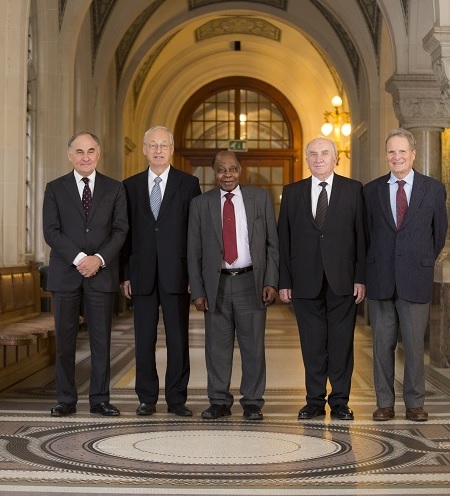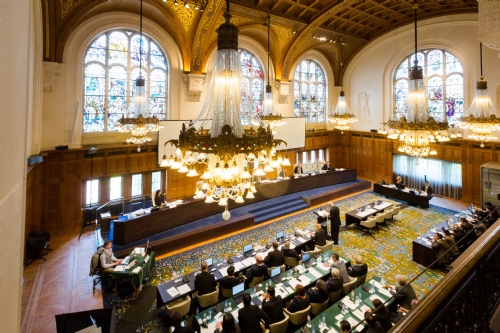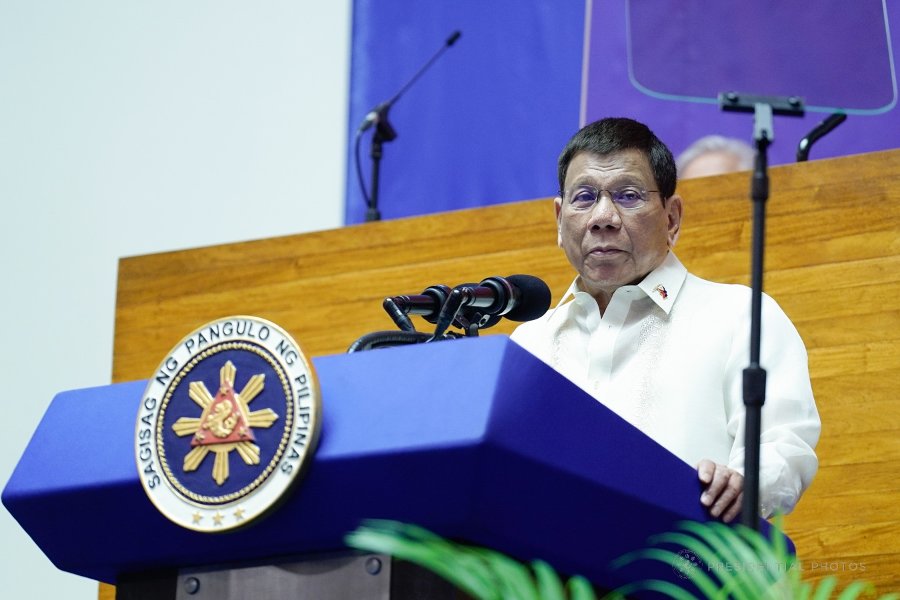By ROMEL REGALADO BAGARES
AND so the Philippines has just had its Nicaraguan moment as it clinched a unanimous decision in most of its 15 arbitral claims against Chinese “Nine-Dash Line” expansionism in the South China Sea.
The Permanent Court of Arbitration, in a landmark ruling released July 12 on the case In the Matter of the South China Sea Arbitration (it’s formal name, also referred to here as the Philippine Case), invalidated China’s claims over pretty much of the maritime areas in the region.
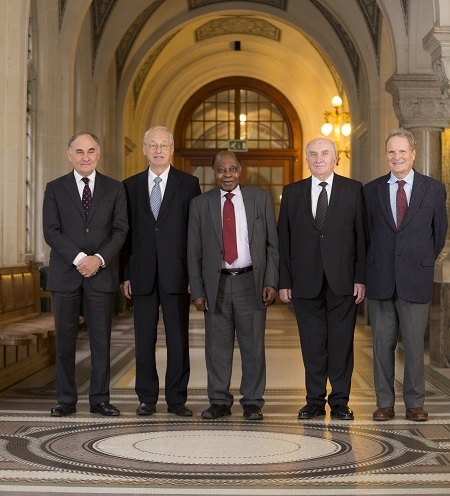
The Arbitral Court also clarified in favor of the Philippines the status of many features in the contested Spratly islands and Scarborough Shoal with both scientific and legal criteria, in relation to a resource-rich Exclusive Economic Zone (EEZ) and Continental Shelf.
The win recalls an earlier and similar David versus Goliath seminal ruling by an international tribunal, the case filed by Nicaragua against the United States in 1984, which was decided by the International Court of Justice in 1986. Here, the United States was sued by Nicaragua before the World Court over the former’s promotion of Low Intensity Conflict and direct military action in its territory through the mining of its harbors.
Key wins for the Philippines
For the most part, the PCA’s definitive clarifications agreed with the Philippine position; but where it did not, the country still came away the winner. Thus, the following important takeaways from the Arbitral Award:.
- Historic rights to living and non-living resources in the South China Sea are incompatible with the maritime entitlements provided in the 1982 UN Convention on the Law of the Sea, insofar as these fall within the Exclusive Economic Zone (EEZ) of other States in the region.
What is doubly significant is that the Arbitral Tribunal also found evidence that consistent with the language of the UNCLOS itself, the Chinese understanding and practice of historic rights as to the Nine-Dash Line does not pertain to historic title to land or maritime areas, which would amount to a claim of full sovereignty, but only to “historic rights short of title.” As the UNCLOS superseded any historic rights, or other sovereign rights or jurisdiction, in excess of the limits it imposes, the Nine-Dash Line claim cannot survive the treaty’s maritime regimes. In this way, the Arbitral Court also made short shrift of Chinese arguments that the issues brought before it by the Philippines were among those it had made reservations about as far as the application of the Annex VII compulsory dispute settlement mechanism of the UNCLOS is concerned.
It bears stressing also that the Arbitral Court deals only with the application and interpretation of the provisions of the UNCLOS and is not competent to adjudicate issues of ownership of disputed islands.
- Mischief Reef (Panganiban Reef) and Second Thomas Shoal (our Ayungin Shoal where we have grounded the BRP Sierra Madre as our forlorn if rutted outpost) –these being low-tide elevations as we had argued– are part of the Philippines’ Exclusive Economic Zone and Continental Shelf. China cannot prevent the Philippines from exercising its sovereign rights over waters and features found within its EEZ.
- Mischief Reef being part of the Philippines’ EEZ and Continental Shelf, China has no business reclaiming it and building artificial islands over it. Moreover, no amount of construction by China can transform low-tide elevations or rocks into full-blown natural islands able to generate all the maritime entitlements under UNCLOS.
- The other features in the Spratlys, namely Fiery Cross Reef, Johnson Reef, McKeenan Reef, and Gaven Reef (North) were held to be rocks unable to independently sustain human habitation or economic life and entitled only to a 12-nautical mile territorial sea. Meanwhile, Hughes Reef, Gaven Reef (South) and Subi Reef were held to be low-tide elevations not capable of appropriation by China. Thus, both sets of reefs do not and cannot generate any EEZ for China.
- Scarborough (Panatag) Shoal is no more than a group of rocks jutting out of the water at high tide, able only to generate a 12-nautical mile territorial sea. However, the Arbitral Court said that the area is subject to traditional or artisanal fishing rights for fishermen from the Philippines, China (and Taiwan) and Vietnam. This is without prejudice to some future determination of who owns the Shoal, a question not within the competence of the Arbitral Court to decide. China violated these traditional fishing rights when it barred Filipino fishermen from the Shoal.
- In a bit of a surprise (may be not, given the scientific side to it), the Arbitral Court ruled that none of the high-tide features in the Spratlys –including our Pag-asa (Thitu) island in the Kalayaan island group — can sustain human habituation or economic life on their own in their natural condition. The Taiwan-occupied Itu Aba itself, at one point considered a “game changer” in the proceedings and a contentious issue between Associate Justice Francis Jardeleza and Associate Justice Antonio Carpio – two members of the Philippine legal team – is technically a rock. Thus, none of the islands can generate anything beyond a 12-nautical mile territorial sea.
- Following this, none of the features that mattered for the Philippines, whether low-tide elevations or high-tide formations, can generate maritime entitlements in favor of China or that would immediately require a delimitation of boundaries, which situation would be beyond the Arbitral Court’s jurisdiction.
- The Court rejected the Chinese position that the Spratlys is one archipelago generating as a whole its own territorial sea, contiguous zone, continental shelf and EEZ. This may prove to be an important factor if and when the question of who owns which island in the island chain is actually submitted to another international arbitration proceeding, this time, under principles of general international law. It bears noting that in its 2009 Baselines Law –
seen by critics as the country’s waiver of its historic claims to title under the 1898 Treaty of Paris – the Philippines also treated the islands in the Spratlys under its control as belonging to a regime of islands under Art. 121 of the UNCLOS.
- The Arbitral Court held that Chinese incursions in the Reed Bank area (Recto Bank for the Philippines, where oil exploration rights had been granted by the Philippine government) violate the Philippines’ sovereign rights over its Continental Shelf.
- Under the UNCLOS and relevant treaties, there is an obligation on the part of states to protect the marine environment from degradation as well as to ensure safe marine navigation. The PCA found that the Chinese government tolerated and protected Chinese fishing vessels engaging in harmful harvesting activities of endangered species at Scarborough Shoal, Second Thomas Shoal and other features in the Spratly Islands. At various times, China was found to have also engaged in unsafe marine navigation vis-à-vis Philippine ships, thus violating relevant treaties to which it was a party stipulating best navigational practices. It also held that China has engaged in irreversibly destructive island-building activities at Cuarteron Reef, Fiery Cross Reef, Gaven Reef (North), Johnson Reef, Hughes Reef, Subi Reef and Mischief Reef. These acts and omissions violated China’s obligations under UNCLOS to protect the marine environment.
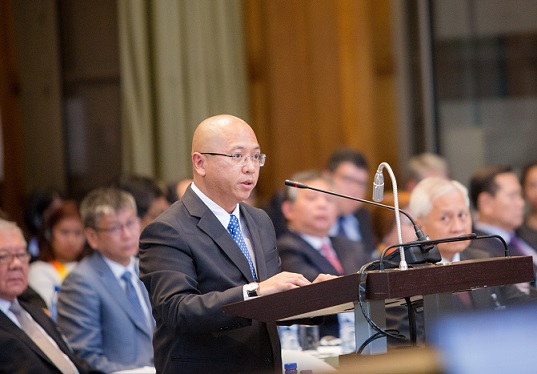
The Philippines’ Nicaraguan Moment
What the Nicaragua case (Military and Paramilitary Activities in and against Nicaragua (Nicaragua v. United States of America) had done for the international law on the use of force and the threat of force, the Philippine Case has just did for the Law of the Sea in many key areas. It established definitive rules on such areas as the legal status of historic rights in relation the maritime entitlements under the UN Convention on the Law of the Sea, artificial and natural islands, low-tide elevations, responsibility for environmental damage, safety in marine navigation, and traditional fishing grounds as against the EEZ.
The Arbitral Award is yet the most comprehensive in scope since the International Tribunal on the Law of the Sea began hearing procedures under a compulsory dispute settlement mechanism of ANNEX VII of the treaty, which took effect in 1994.
The five-member arbitral tribunal was convened in 2013, comprised of some of the world’s leading subject-matter authorities. Presided over by Judge Thomas A. Mensah of Ghana, a former President of the International Tribunal for the Law of the Sea in Hamburg, Germany, it included three of the sitting judges on that court, namely Judge Jean-Pierre Cot (France), Judge Rüdiger Wolfrum (Germany) and Judge Stanislaw Pawlak (Poland), and Professor Alfred H. A. Soons, the former director of the Netherlands Institute for the Law of the Sea.
The uncanny parallels and ironies in the two leading cases are a-plenty, although they concern by and large different areas of international law.
Not to be missed is the fact that Foley Hoag, the Philippines’ lead counsel in the South China Sea Arbitration is the same American law firm that won for Nicaragua respect in the world stage in its legal battle against the United States at the height of the Cold War. Both cases involved a behemoth in world politics – the United States in the 1986 case, China in the 2016 case.
The first case was filed over American intervention in a country that had turned communist and had repudiated ties with a former patron; the second case involved a communist state’s Post-Cold War ambitious and creeping occupation of a wide expanse of maritime territories encompassing some of the world’s busiest sea lanes.
In the Nicaragua Case, although the United States participated in the Jurisdictional Phase, it disengaged from the proceeding as it went to the Merits. In the South China Sea Arbitration, China formally stayed away from the proceedings from Day One, calling it illegal (but informally put forward its position to the Arbitral Court, including writing individually its members as well as publicizing a position paper it had commissioned to rebut the Philippine case).
In both cases, the Courts ruled on the most important questions that it had jurisdiction to hear the controversy brought before it, and decided in favor of the party that filed the suit. The United States in the first case and China in the second case would refuse to recognize the court judgment.
Yet in the Philippine Case, the United States vigorously supported its long-time ally and former colony in its campaign to invalidate China’s expansive Nine Dash-Line claims. This, even if it is not a party to the UNCLOS.
The Nicaragua Case would go on to be an important precedent for many other international law cases, reshaping in fundamental ways in which the international community now understands the use of force and the threat of force as a means of settling international disputes under the UN Charter. Some scholars also credit the ICJ’s ruling in the de-escalation of many insurgency-related conflicts in the Latin American region.
In the South China Sea dispute, the US had called on China to follow a rules-based regime in settling the maritime conflict, when three decades earlier, it was not willing to abide by the binding nature of the ICJ’s judgment in the Nicaragua Case.
In fact, in the Philippine Case, the Permanent Court of Arbitration itself would cite the Nicaragua Case favorably in establishing why it had jurisdiction to hear the case, yes, even despite the non-participation in the proceedings of interested parties other than China.
On that question as well as on where and when a party is defaulting, the Arbitral Award is a masterful study of why international law cannot be allowed to be held hostage by the refusal of a state – a superpower at that in this case – to participate in a proceeding that concerns communal interests.
The independence of international tribunals is immensely important in the legitimacy of their rulings. The South China Sea Arbitration, as does the Nicaragua Case, shows that international law – contrary to what the Marxist theorists have put forward in the past, can be divorced from the politics of naked power.
It is likely that scholars and international tribunals would mine the Arbitral Award’s nearly 500-page carefully argued ruling on the Merits as a bible of sorts on the UNCLOS for many years to come.
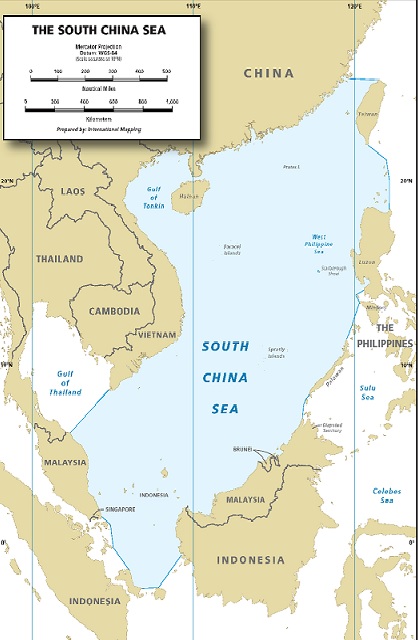
The way forward?
The ICJ’s first female judge, Prof. Rosalyn Higgins, defines international law as a “normative process of authoritative decision-making.” By this definition, the Arbitral Award is already a big step towards legal stability in the South China Sea, removing once and for all the ambiguities that had attended the Chinese Nine-Dash Line claim since it was first advanced in the late 1940s.
By its very nature, the UNCLOS itself was designed to define in clear terms what maritime entitlements accrue to a coastal state, and the PCA, in the South China Sea Arbitration, has just made clear Chinese maritime claims cannot exceed what is available to it under the multilateral treaty.
As former University of the Philippines professor Harry Roque, now a legislator, argued, “the Court’s decision in this arbitral case will be its own enforcement mechanism.”
Roque, who taught international law for many years, said that a declaration by an impartial tribunal of the illegality of an act of a state in this case “has inescapable profound implications on what kind of values the international community wants to govern the way relations between and among states are conducted.”
Vociferous Chinese opposition to the Arbitral Award has evoked in Chinese constituencies memories of egregious past historical humiliations during colonial times. It has even kicked up the specter of a proxy war in which the real power behind the arbitration is the United States – the same country that refused the ICJ’s ruling in the Nicaragua Case thirty years ago. (The fact that the American law firm that gave a resounding defeat to the US in the Nicaragua Case is the same law firm that litigated the South China Sea Arbitration on behalf of the Philippines somehow blunts the charge).
Yet, in many levels, the Philippines in the South China Sea Arbitration may be better situated than Nicaragua was when it won the ICJ ruling in 1986.
For one, many countries other than the United States have, from the beginning, supported the Philippine cause, including those considered as “specially affected states” in international law.
Too, major European powers that supported the American veto against the ICJ’s Nicaragua Case ruling have expressed support for the Philippine arbitral case against China (as in the case of France and the United Kingdom). Indeed, many big players in the European Union have urged China to act according to international rules.
To a big extent, this is because other than territorial or maritime concerns, the South China Sea region straddles an area with enormous economic potential that goes beyond its actual geophysical reaches; it practically implicates the global economic order, as a third of the world’s shipping pass through the region.
There is also the fact that the Arbitral Award has far-reaching consequences – a “domino effect” – even if refused acceptance by China; this is because it without doubt also benefits other claimant states – again, members of the ASEAN – who reject Chinese claims that encroach on the maritime regimes they also claim for their own under the UNCLOS. The Arbitral body’s decisive demolition of the Nine-Dash Line claim has that effect.
Moreover, with a judgment embodying definitive rulings on what before were unclear problem areas as far as the features found in the South China Sea is concerned, the Arbitral Award presents a logical and legal basis for a proposed Code of Conduct among claimant countries belonging to the Association of Southeast Asian Nations.
Perhaps, at no other time than this has it become opportune for the ASEAN to deal collectively with the elephant in the room that is China. While it is true that China is a major trading partner for many of them, the regional body cannot ignore any instability in the region sparked by the increasingly intransigent Chinese coming at a time when the association is moving towards greater economic integration.
And at least with respect to the Scarborough Shoal, there is room for compromise, or the development of a common code for traditional fishing, as pointed to by the PCA in its Arbitral Award.
Paradoxically, it also gives the Philippines greater constitutional flexibility. The 1987 Constitution expressly allocates the resources in the country’s EEZ for the exclusive use of its citizens. It is however silent where resources in traditional fishing grounds are concerned.
In any case, its 2009 Baselines Law had carved out a regime of islands out of Scarborough Shoal; it is a designation that does not necessarily conflict with the Arbitral Award stating that the Shoal is but an outcrop of rocks, or an island complex unable to sustain human life or economic activity, not to mention that the Philippine Supreme Court had also already rejected a constitutional challenge to the new Baselines Law.
Thus, President Rodrigo Roa Duterte may very well be correct in his basic stance of renewed diplomatic ties with China –but only if he negotiates from the unprecedented position of moral and legal strength the PCA’s Arbitral Award has just given to us.
* Mr. Bagares has a law degree from the University of the Philippines and serves as Executive Director of the Manila-based Center for International Law, an NGO dedicated to the promotion of the Rule of Law in the ASEAN region through binding international legal norms. He also teaches public international law at the Lyceum Philippines University College of Law.
